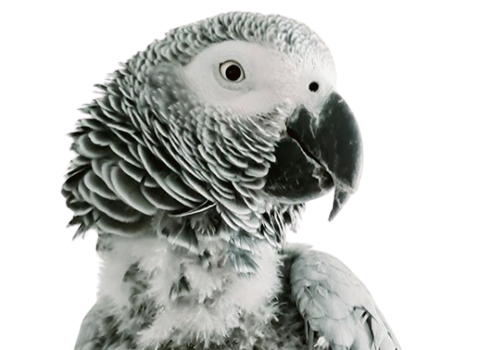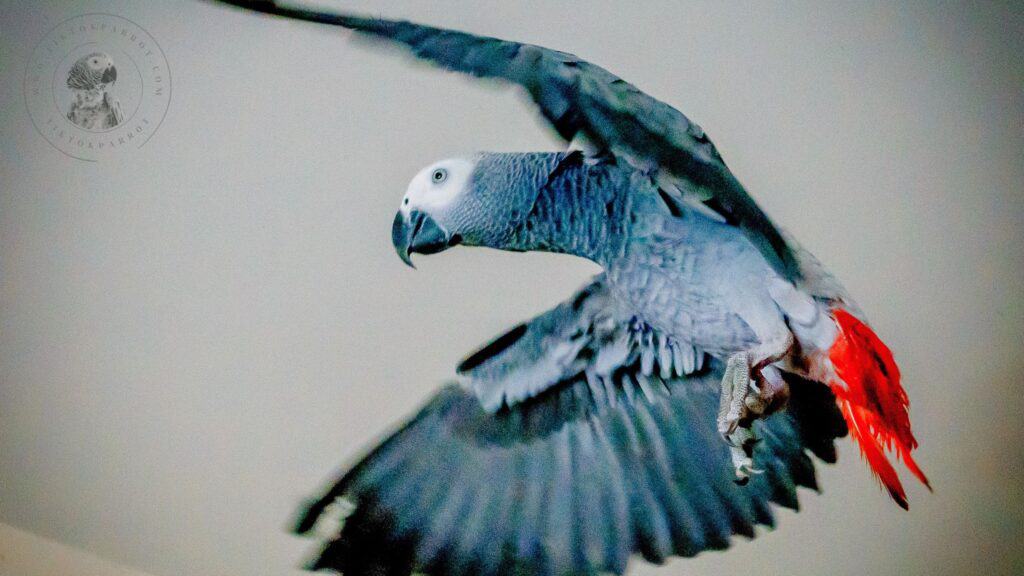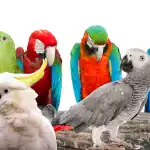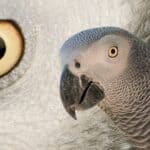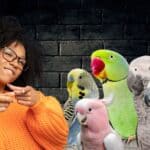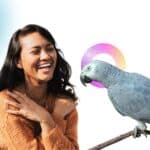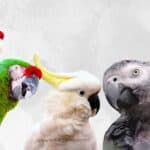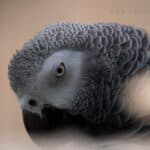Parrots are becoming more popular as pets with each passing day. This is evidenced by the many new books published each month, the number of new products developed and marketed in the increasing number of magazines devoted to parrot keeping, and the proliferation of Internet discussion lists which provide access to information regarding parrot care and behavior.
This upsurge in the number of parrots in homes and the amount of information newly available does not alert the companion parrot owner to a very important and pertinent fact – that parrot keeping is a relatively new phenomenon.
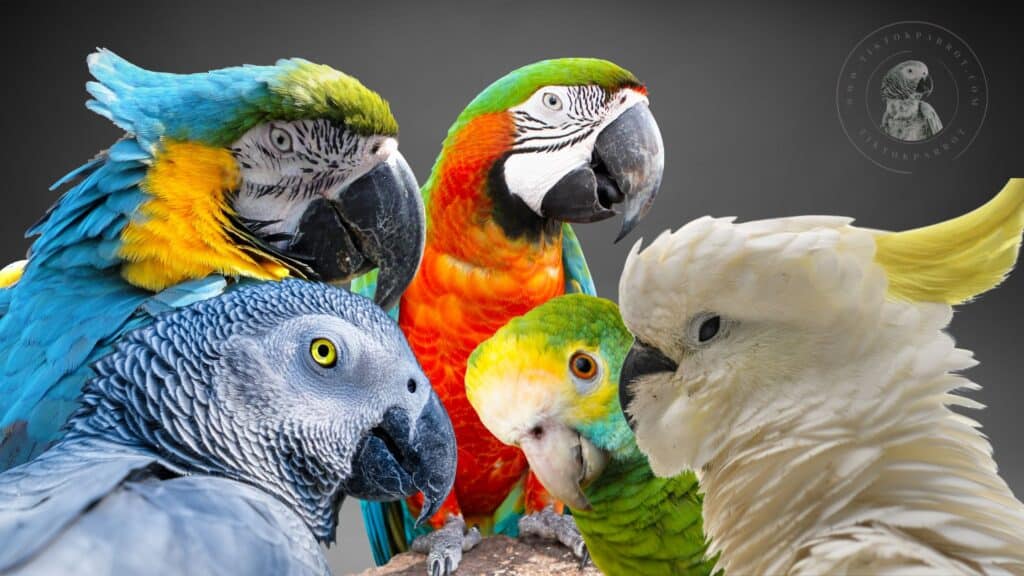
It has really been only in the last 30 years or so that the popularity of parrots has significantly grown. The importation of wild-caught parrots was only brought to a halt by legislation in 1992.
Thus, many of the parrots in captivity are wild-caught birds. Since these wild-caught parrots were plentiful and inexpensive for many years, it has only been perhaps in the last 20 years or so that hand-fed parrots have begun to be produced in any real numbers.
With the advent of incubation and hand-feeding practices, there has been a proliferation of domestically reared psittacines, routinely offered for sale in pet stores. These hand-reared birds have brought with them a whole new set of challenges. For one thing, they manifest many behavior problems that we did not encounter with wild-caught birds.
This increase in parrot behavior problems has created fertile ground for the birth of a new profession, that of the avian behavior consultant. Consultants not only work individually with owners to find the most effective means for dealing with behavior problems, but educate the public at large about the needs of these beautiful creatures.
Thus, both the fields of behavior consulting and avian veterinary medicine are quite new. It is important to understand this, because it means that ideas regarding parrots and their care are in flux.
There is ever-growing debate about not only the best methods for dealing with behavior problems, but the standards of care that should be adopted by those who keep parrots, and how those parrots should be reared to begin with.
It is important to remain mindful of this truth, so that we continue to question our care-giving practices. It is entirely possible that ideas that we hold to be true today may very well be proven foolish as time passes.
A good example of this is the theory of “height dominance,” which states that allowing a parrot to perch up higher than the owner’s eye level or on the owner’s shoulder will result in a parrot who believes itself to be the dominant member of the relationship, resulting in non-compliance.
While most avian behavior consultants accepted this theory as fact for many years, voicing warnings to always keep parrots perched down low, it has now become clear to many working in the field that there is little truth to this.
I believe that our accepted practice of wing clipping every companion parrot will be one of the next to come under close scrutiny, most likely resulting in a decrease in this practice.
Prevailing Attitudes toward Wing Clipping and Flightedness
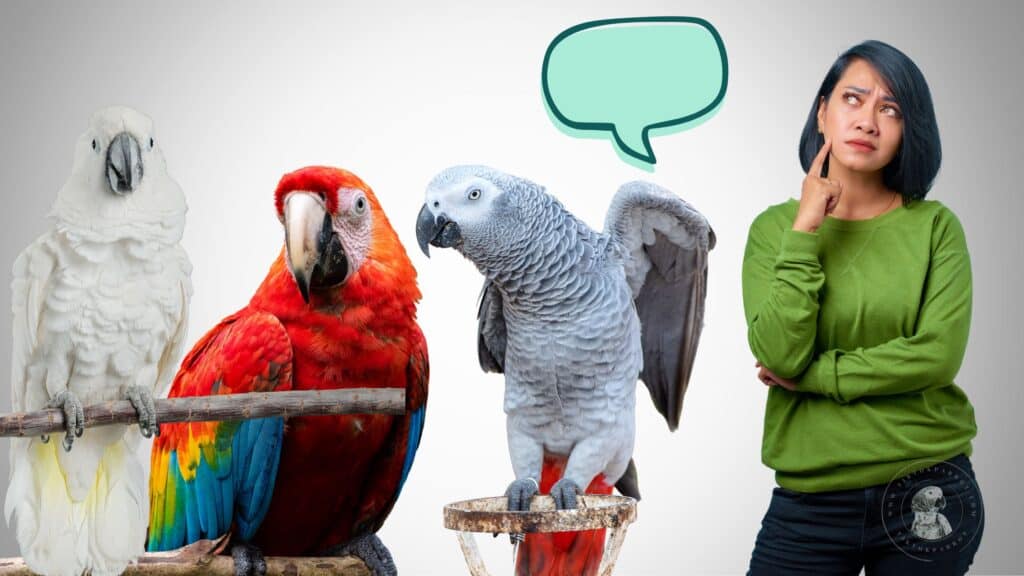
At this point in time, parrot owners in the United States routinely clip their birds’ wings in order to prevent or limit flight. Conversely, parrot owners in European countries do not, since this practice is believed tantamount to abuse. This fact alone allows us to understand that this practice, often recommended with almost religious fervor here in the United States, may not be quite as necessary as many believe it to be.
The subject of wing-clipping often elicits strongly held opinions from parrot owners, veterinarians, and behavior consultants alike. They typically offer polarized opinions towards flight: they would never clip their parrots’ wings, or they vociferously condemn those who allow flight, proclaiming that all parrots should be clipped.
While I, too, have my own biases, I will attempt in this article to take a balanced look at issues related to the flight of birds when kept in captivity, at the pros and cons of both keeping parrots clipped and of keeping them flighted.
First, however, let’s take a look at some facts related to the flight of birds. If we are going to deprive a parrot of flight, we should do so with full recognition of what it is we are doing.
Facts Regarding Feathers and Flight
Birds are the only living creatures with feathers. Given that fact, even those readers without familiarity with parrots, might assume that feathers and flight would be of critical, primary importance to the life experience of any bird.
In The Lives of Birds by Lester L. Short, the author remarks, “…everything about a bird’s physical structure, and indeed much of its physiology, is affected to some degree by the constraints of flight.” We could take Mr. Short’s observations one step further to very rightly state that everything about a bird is affected by its need to fly, including its emotional make-up. A bird is flight, and to ignore this in our parrot keeping practices is to do them an injustice.
Feathers come in several different forms
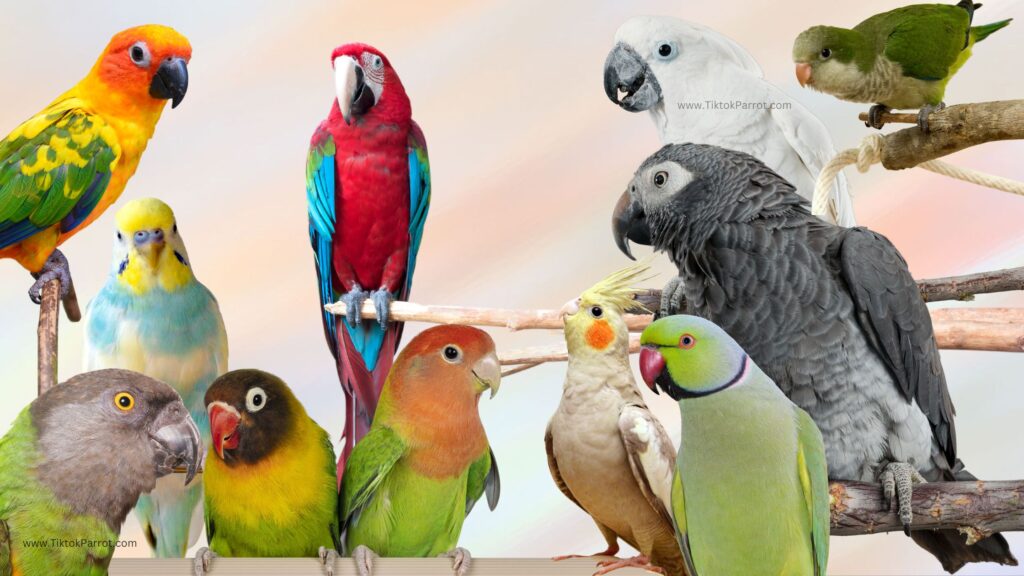
Smooth ones cover the body, fluffyones provide warmth and insulation, and long, stiff feathers provide support for flight. An average-sized bird has several thousand feathers, which grow in feather tracts, with patches of bare skin in between.
The flight feathers have a central, spongy shaft, making the feather lighter and more flexible for flight. Barbs extend outward, slanting diagonally from either side of the feather shaft. You can easily pull these barbs apart, then by pressing above and below the separation, zip them together again, the same way the bird does while preening.
From each side of the barb grow hundreds of barbules that overlap each other. Minute hooks on the barbules lock the branches together. The “construction” of even a single feather is exquisitely complex.
Feathers have many advantages. They are light and are replaced regularly when worn or lost. Each feather is individually attached to a muscle, which allows for greater maneuverability.ii Feathers enable birds to fly thousands of miles a year, to fly at speeds of 100 miles an hour, to hover and fly backwards, and to fly for days at a stretch without stopping.
The bird’s skeleton has evolved in such a way as to keep flying weight to a minimum. The skull of most birds is paper thin. Many have hollow bones, which are filled with air sacs for increased buoyancy. A frigate bird, whose wing span is seven feet wide, has a skeleton that weighs only four ounces, less than the weight of its feathers.iii
Other organs have evolved in such a way as to make flight easier as well. The heart has become enlarged to include four chambers in most birds, in order to be able to remove impurities from the blood more quickly.
In avian “lungs,” air is pumped through a system of air sacs that branch off the lungs to occupy much of the bird’s body. These air sacs act as bellows.iv In some species, this system of air sacs extends even down into the legs. In fact, in 1758, an English surgeon showed that a bird could still breathe if you completely blocked his windpipe, but made a small hole from the outside into a wing or leg bone.v
The fusion of various bones in the skeleton has also resulted in decreased overall weight, and in some cases more flexibility. The bones of the clavicles have fused into the “wishbone” or furcula.
Scientists have been able to view, with high-speed x-ray movies, the flight of a starling in a wind tunnel. They observed that the furcula opens and closes with each wing beat, acting as a sort of spring. This appears to assist the bird in breathing, pumping air throughout the respiratory system.vi
One of the most important functions of flight is that of migration. Even tropical birds, who are not subjected to the extremes of weather, move with the seasonal rains and droughts, often across hundreds of miles.vii Certain examples of migratory flight almost defy belief.
Some shorebirds fly non-stop from South America to the coast of New Jersey. This flight takes ten days to complete, a total of 240 hours of uninterrupted flight. The motivating force behind migration is about finding food, rather than avoiding severe temperatures.
In reporting the migratory efforts of the short-tailed shearwater, a bird that covers over 18,000 miles in a single year, Weidensaul comments, “Migrations like this leave us staggered; we are such stodgy, rooted creatures. To think of crossing thousands of miles under our own power is as incomprehensible as jumping to the moon. Yet even the tiniest of birds perform such miracles.”viii
During flight, a number of flight skills are demonstrated. The bird must be able to gain lift. Three factors affect lift: the surface area of the wing, the wind speed, and the angle at which the wing is held.ix Gliding is another important skill for a flying bird.
A bird will stop beating its wings, and thus begin to glide. This results in a loss of speed, which enables the bird to land. Gliding and hovering are necessary to landing. Powered flight requires more energy, and is achieved when the pectoral muscles drive the wing downwards.
Birds must also be able to steer themselves once in the air. They can do this solely through the use of the wings. This is achieved by altering the angle or shape of one wing.
Aside from the importance it has to birds, flight has carried significance for humans since time began. As Jack Page and Eugene Morton write in Lords of the Air, “We humans appear always to have been on the lookout for ways to understand ourselves and our world, and for most of our tenure here, we have rarely looked at any bird – say, a crow – and simply seen a crow…. In the first place, crows and most other birds fly, and flight has meaning.
The crow is black, and black means something. Feathers mean something, as do the eggs from which the crow is born. For most people throughout time, these meanings have been as real as the bird itself, and perhaps more so, since the meanings were taken to be universal and eternal. Flight means space, light, thought, imagination.”
Among the early Egyptians, Greeks and Romans, the bird came to signify the human soul. In ancient Egypt, the feather was one of the hieroglyphic elements that spelled such words as lightness and height. Wings have been seen as analogous to spirituality. To the Greeks, they also signified love and victory.
While these are only a few of the fascinating facts related to bird flight, they underscore two major points. First, every physical feature of the bird has evolved to facilitate flight. Second, much of our fascination with birds is because they can fly.
Attitudes toward Companion Parrots and Flight
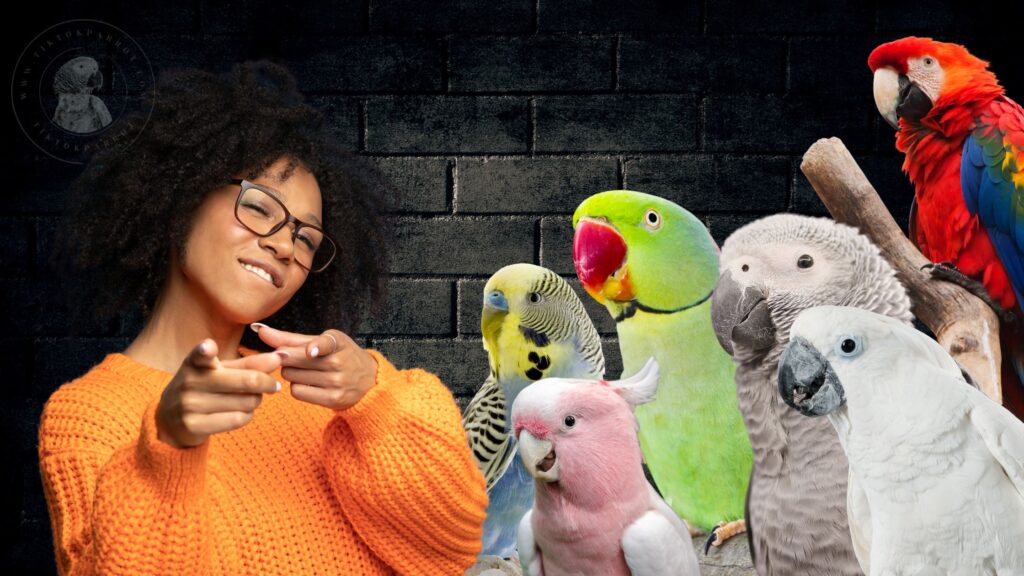
It has long been held as strong opinion in the United States that all companion parrots must have their wings clipped in order to insure their safety.
This routine practice has led also to the rarely-questioned practice of clipping the flight feathers of baby parrots before they have a chance to take their first flight. It is assumed that, if the flight feathers are clipped for the purpose of removing flight, then the bird can not fly away and become lost. I believe it significant, and troubling, that the unstated, but underlying assumption behind this practice is that our companion parrots would fly away if given the opportunity.
In most literature in print today, the choice to either keep our parrots flighted or clipped is always presented as a very “black and white” decision, as if they are no options in between. The owner either keeps the bird flighted, or the bird is clipped, and clipping is highly recommended. In fact, this is not such a black and white issue.
Many parrot owners keep their parrots just partially clipped. Some allow flight at some times of the year, then clip their parrots for the remainder of the year, as might the couple who travel in a motor home for the summer and take their bird with them.
I believe that we are now at a crossroads in terms of our practices regarding the clipping of our parrots’ wings, and that it is high time to closely scrutinize and review our thinking on this issue. There are advantages and disadvantages to both keeping parrots clipped and to keeping them flighted. The well-informed parrot owner should be cognizant of all of these, in order to be able to make an informed choice for his own birds.
Whether we choose to clip our parrots, or allow them flight, we must take the responsibility for the fact that we are keeping a flighted spirit in our home.
Advantages of Wing Clipping
As previously stated, the majority of companion parrot owners have kept their bird’s wings clipped in order to insure the safety of their birds…that they could not fly away and get lost. This is still seen as the major advantage of this practice. Aside from that original purpose, advocates of clipped wings have seen several other advantages as well.
One obvious advantage is that the parrot must live a sedentary life, remaining where he is put, either on his cage or an alternate perch. This minimizes the destruction of household items that often accompanies parrot keeping.
Parrots in the wild spend much of their time tearing apart plant life, and this is an instinctive behavior. Flighted parrots can go where they want, finding access to the owner’s possessions more easily than might a clipped parrot.
Given that, keeping a parrot flighted requires a certain amount of “training” on the part of the owner. If the owner lacks the knowledge that will enable him to train his parrot to observe certain “rules,” then the parrot may wind up spending more time in his cage than might a clipped parrot. Thus, a third advantage to keeping the wings clipped is that the parrot may enjoy more time out of his cage safely.
A fourth advantage involves the relative ease the owner has in taking his parrot places. It is much easier to take a parrot to visit a friend or on a trip to the hardware store if his wings are clipped. A flighted parrot must be controlled in some way, either by wearing a harness or riding in a carrier when going places.
Lastly, for those owners relatively inexperienced in handling parrots, it can be much easier to handle a well-socialized, clipped parrot, than it is to deal with a flighted parrot. Many flighted parrots, if not well trained and well bonded to the owner will simply fly away when an attempt is made to handle them or introduce them to new experiences.
Disadvantages of Wing Clipping
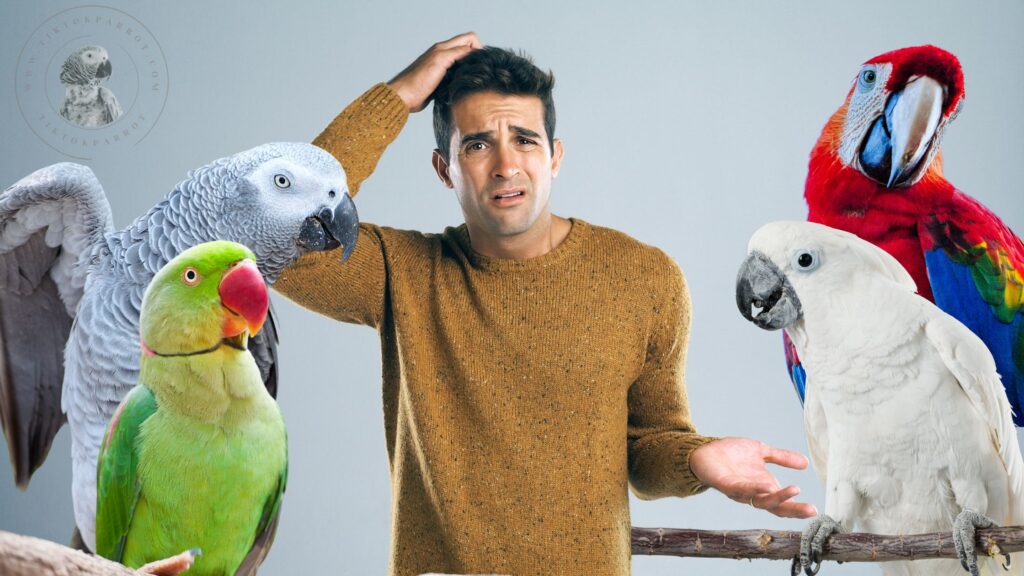
Ironically, the first advantage mentioned above – that of insuring that the parrot can not fly away, is not always the advantage it appears. The single greatest disadvantage to keeping the parrot clipped is that it leads the owner to completely abdicate responsibility for the fact that they are keeping as a pet a flighted creature.
If the owner truly understands the importance of feathers, wings and flight to the parrot, does it not stand to reason that he should work hard to understand all aspects of the bird’s psyche and physical health that correlate or are influenced by this defining ability to fly?
Sadly, all too often the owner of the clipped parrot abdicates any responsibility for the fact that he keeps a flighted creature as a companion. He does learn about the flighted aspects of his bird. He does not understand how and why, and most importantly when, molting takes place.
He does not teach the parrot to allow an examination of her wings so that it can be ascertained how many flight feathers might have grown out and when the parrot might need to be clipped again. He does not understand how either a slight breeze or two extra flight feathers might increase flight capability. Tragically, this often results in the loss of the bird.
I once spoke to a woman who owned a sun conure. She once mentioned that, upon her groomer’s advice, she took the bird in once a month to have its wings clipped.
This woman had been led to believe that a bird’s flight feathers grow in the same manner as does human hair – constantly. She is a perfect example of the phenomenon I am describing. She was entirely well-meaning, but nevertheless had abdicated responsibility for the fact the she was keeping a flighted companion.
Further, during every initial consultation with a new client, I ask them how many flight feathers their parrot has clipped. I have yet to meet someone who could tell me that. They simply leave the whole matter up to the groomer.
For any readers also new to parrots, and unclear about flight feathers and when clipping should take place, I will briefly explain this. Most parrots have a major molt once a year and this most often occurs right after breeding season, in late summer or early fall. They also may have a second, minor molt during the winter.
For example, African Greys have their major molt in August and September, but also have a minor molt in January and February.
Thus, ideally, a parrot should only need to have its wings clipped once a year, if the timing is good. However, if the clipping takes place prior to the molt, and then additional flight feathers grow in during the molt, the wings will need to be clipped again when the molt is over.
Again, the greatest disadvantage to wing clipping is that it encourages complacency in the owner. The owner is given to believe that his only responsibility is to take the parrot into the groomer or veterinarian at regular intervals to have the wings clipped. This same owner is also led to believe that her parrot can not fly.
These are the owners who venture outdoors with their birds on their shoulders, place their birds in trees for a little afternoon playtime, or carry their birds around on their hands in busy areas. These are the owners who lose their birds.
For, the truth is, the parrot who is always clipped will still, under certain circumstances, be able to fly away, but will not have the flight skills or the knowledge that would enable it to fly back to the owner.
A once clipped parrot who has grown out a couple of flight feathers on each side, who encounters a slight breeze outdoors while riding around on the owner’s shoulder, and who is startled by the sight of something nearby, can travel quite a long way.
A second disadvantage has yet to be proven. If we remember back to the information gathered by scientists about the relationship between flying and breathing, it is possible that the overall health of the respiratory system may be compromised if the bird is never allowed to fly.
I believe it possible that life span may be shortened, or the parrot may fall victim to respiratory illness, when she is denied the form of exercise that is rightfully hers.
There are some very fundamental and measurable physiological changes that take place in the body during exercise. As aviculturist Gloria Scholbe explained so well in a message sent to the Holistic Bird Internet Discussion List, “Wild birds exercise their muscles on a regular basis as they forage for food. In addition to getting them to where they are going and obtaining fuel for the body’s needs, exercise benefits the body in other ways.”
“Improvements created by exercise begin at the cellular level. Deep inside each cell are mitochondria. These cellular elements produce energy. As the body expends energy through exercise, the body signals its need for more energy, so numbers of mitochondria increase to meet that need. The number of capillaries also increases when the body signals its need for more oxygen.”
“Each muscle that is worked during activity becomes stronger because of the work it is asked to do. Body systems that support the muscles are also affected by the muscle’s work.
The heart becomes stronger, and blood vessels increase in number and in strength. The nervous system increases in efficiency. The lungs and respiratory system dislodge bacteria and improve the work of oxygen exchange. Bones, which support the muscles, increase in density. All around, the physical body is strengthened through exercise, but the benefits don’t end with the physical body. There are emotional benefits too.”
“Sustained exercise results in feelings of overall well-being. This is partly because exercise stimulates the brain to secrete endorphins and other chemicals that help to reduce pain and lift depression. Exercise reduces tension and helps to dissipate the damaging chemicals produced as a response to the ‘fight or flight’ reaction.”
Gloria brings up yet another disadvantage that results from lack of exercise. Parrots evolved to fly many miles each day, which requires the expenditure of lots of energy. In captivity, these same parrots now sit in cages for hours each day. The result of this sedentary lifestyle is often an increase in noise (screaming) and, in come cases, aggression, which can lead to the bird losing its home.
In a great many cases, both of these problems can be improved or completely resolved by increasing the exercise the bird gets, in addition to increasing the amount of mental stimulation provided the bird.
A third disadvantage of wing clipping is the heavy reliance upon the groomer’s judgment, and the bad wing clips that frequently result. Many young African Greys and Poicephalus are started off on a life of fear and pain when clipped too severely as babies.
This not only ruins their balance, but prevents them from gliding downward if they are startled. Instead, when startled, they often drop like a rock, injuring their chests and keel bones, and creating a constant feeling of anxiety and fear in the young bird.
These too-short wing clips often are the beginning of a feather abuse problem, wherein the parrot either chews off the ends of the remaining flight feathers and any incoming, new flight feathers, or starts to barber or pull the chest feathers.
Brian Speer, DVM, in his lecture given to listeners at The Parrot Festival in Houston, Texas in January 2002 discussed this very problem. He stipulated that, under no circumstances, should flight be removed from a parrot all at once, and that no more than between five to seven flight feathers should ever be removed from a bird.
I can only completely agree. If clipping is deemed necessary, the owner should see that it is done in stages, perhaps clipping the first three flight feathers on the outer edge of each wing, then taking the two next flight feathers a couple of weeks later.
A fourth disadvantage concerns only some species, in whom the removal of flight ability can arouse significant feelings of vulnerability. This is true for some Red-tailed (Congo) African Greys, especially the more passive personalities among this species.
Some individuals are genetically predisposed to experience more anxiety and fear than are others, and for these birds, clipping can result in increased behavior problems related to anxiety.
Lastly, there is a profound disadvantage to baby parrots in never being allowed to fledge and develop good flight skills prior to being clipped. I raise African Greys on a small scale. Each baby is fledged and flies for at least 8 weeks before any clipping is done. I have also taken in several older African Greys, who had lost their homes for one reason or another.
Thus, I have had ample opportunity to observe the personality differences between those birds I have reared, fledged and kept, and those individuals I rescued who never had the opportunity to fly. The difference is like night and day.
When a young bird fledges, he learns to think. He learns to act volitionally. He goes through a mental and physical process every time he takes a flight. He decides that he wants to move, where he wants to go, then must figure out how high and fast he must fly to get there, and when to stall and hover prior to landing. This is a complex series of thoughts and actions.
If a parrot does not learn to think and act volitionally as a fledgling, there is little chance that he will ever do so, even if his flight feathers are allowed to grow out. I have three rescued older African Greys here who, although fully flighted, will sit in one place all day if I do not move them. They never learned to act with volition. Even though they are physically able to fly, it does not occur to them to do so.
I do not think that every species has such a profound reaction to being clipped as a youngster, but we might imagine that there is not the full development of the personality that takes place if, as a young bird, the parrot learns that he can go places if he wants to, and learns the attendant flight skills that enable him to do so. Simply put, flight enables personality development and expression.
Taking Responsibility for the Clipped Parrot
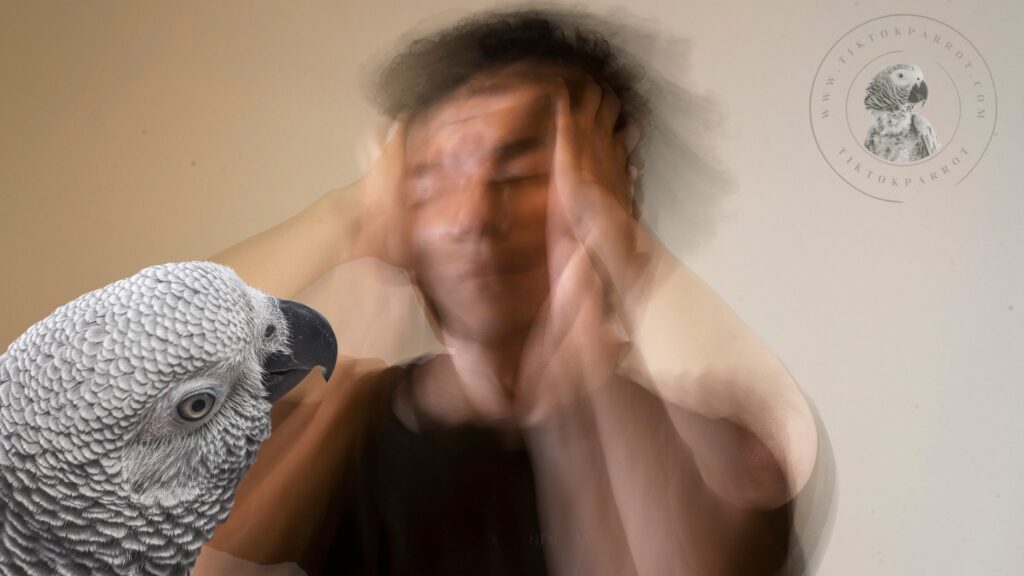
The decision to clip a parrot should be freely made, rather than imposed by present social customs. While much of the literature in print today regarding parrots would have you believe that it is irresponsible not to clip a parrot’s wings, the fact that clipping wings is seen in other countries as almost akin to abuse allows us to understand that there are no “have to’s” about this issue.
Each parrot is an individual, as is each owner. For some, the decision to keep the companion parrot flighted will be the best one. For others, such as homes where small children are likely to leave doors open, one of the residents tends to be absent minded, or the parrot is very territorial, it may be a very good decision to keep the companion parrot’s wings clipped.
If we do choose to keep our parrots clipped, then is it imperative that we take responsibility for doing so. We must learn about and come to understand the process of molting, and teach the parrot to allow an examination of his wings so that we can tell when he does need grooming.
We should either learn to clip the parrot ourselves, in order to prevent a “bad” wing clip, or be prepared to act assertively with the groomer and specify the number of flight feathers that should be removed, using the guidelines provided by Dr. Speer. (It is not true that your parrot will hold it against you if you clip his wings yourself.) And, lastly, we must work hard to make up for the fact that the parrot can not fly.
We should move him from perch to perch throughout the day, so that he has some variety, and strive to provide him with a varied number of activities through which he can exercise both his mental and physical abilities.
I would also recommend exploring the “gray” areas of flight. For some parrots, it might be a good idea to allow the parrot a few weeks of full flight each year after the annual molt, before clipping him back very gradually. This should help to keep him physically fit.
Advantages of Flight

Some of the advantages to keeping a parrot fully flighted within the home will be obvious, as they will be the converse of the disadvantages of wing clipping. If ever lost, the parrot is more likely to have both the stamina and the flight skills to fly back down to the owner when found.
The bird is more likely to enjoy good health, both physically and mentally. There is no possibility of damage being done by a groomer who performs a bad wing clip. For the young bird who is allowed to fledge and fly, even if clipped prior to going to his new home, there will be the joyful and enthusiastic expansion of personality that occurs during fledging, provided that the period of flight allowed is several weeks in duration.
Such an initial period of flight will lead to both confidence and coordination. The young parrot allowed flight will remain forever a more athletic creature, and a more enjoyable one to have around, at that.
A couple of these advantages warrant closer inspection. First, the owner who keeps his parrot either partially or fully flighted is likely to be more involved with his bird. Out of necessity, he will find it necessary to do some training with the parrot, in order to protect his household furnishings and possessions.
This training of flight cues is not difficult to do with a bird, and is a lot of fun for both owner and parrot. The majority of my own parrots are flighted, and each responds to the cue, “Off there!” From personal experience, I believe that flighted birds are more fun to have as companions. They are so much better able to reveal their personalities through movement of choice.
Consistent with the need to teach some flight “rules,” many owners of flighted parrots go so far as to teach the parrot to come when called. This is known as teaching “the recall.”
This becomes a huge advantage to the owner of a flighted parrot, because if the parrot ever does get loose outdoors, the owner stands the very best chance of recovering the parrot. If he has also consistently encouraged the use of a contact call, he will have a much easier time locating the bird.
It is ironic that proponents of wing clipping most often determine the necessity of this practice based upon prevention of loss. In fact, a flighted parrot who has good skills and stamina, who knows how to fly downward, who has perhaps spent time outdoors in an aviary, who comes to the recall cue, is in most cases, quite easy to recover. I personally believe this to be the best prevention against loss, far superior to the removal of flight.
Lastly, there comes with keeping a flighted parrot a true appreciation for the keen intelligence and magical whimsy so frequently displayed by the flighted bird. Flighted parrots are often more enjoyable, since they are well able to make choices and interact with us at will.
They are a lot of fun. By always keeping the birds in our midst clipped, I believe that we blind ourselves to the view and appreciation of the parrot as a flighted entity, which in some cases even leads to the abuse of the parrot. And, certainly, it allows us to hold onto the historic vision of birds as unintelligent creatures. We have all heard of the “bird brain,” a most uncomplimentary label. In the end, we, as well as the birds, are the losers.
Disadvantages of Flight

That stated, however, there are some serious considerations and some true disadvantages to keeping a flighted parrot. They are not, however, those most often alluded to by those who warn against flight. Many times we hear of the dangers of keeping parrots flighted in the home.
The usual dangers cited are windows, kitchen appliances, electrical cords, the toilet, etc. In truth, however, parrots are “learning machines,” quite capable of learning about windows and other household hazards.
It is true, though, that the owners of flighted parrots need to be alert and aware of potential losses. Many who keep parrots believe that these birds are always on the alert, ready for an opportunity to escape. Nothing could be farther from the truth. If treated well, our parrots do not want to escape or to fly away from home. It does, however, occur by accident.
A typical scenario occurs when the owner does not pay attention to the bird’s location in the room, and opens the door to walk outside. The parrot flies to the owner’s shoulder as the door opens, is startled by the sudden exposure to the outdoors, and takes off in flight. Or, the parrot sees the owner outdoors and attempts to fly to the owner through an open door.
Other losses through injury or death occur when a flighted parrot chooses to perch atop an open door…and someone closes the door quickly. In some cases, death comes when a transparent partition is closed, never having been closed previously. In one instance, the home had a sliding glass door that separated two rooms. This door was always open. The African Grey had long been flighted and enjoyed a routine pattern of flight in the house for exercise. One day, someone closed the door.
While baby parrots who are just fledging, do not, as a rule, have the muscle development that allows them to injure or kill themselves when running into windows, a fully flighted parrot, in good shape, can certainly kill himself flying into such a partition, just as wild birds do when flying into windows.
Anyone who elects to keep flighted parrots can not be absent-minded. They must maintain an awareness of the parrot’s location in the home at all times, travel through doorways carefully, and think through any actions likely to impact the flighted bird. For instance, the operation of a ceiling fan can mean the death of the flighted parrot, if the owner absentmindedly turns it on without thinking of the ramifications.
Second, as previously stated, in order to live companionably with a flighted bird, it is necessary to provide instruction about where the bird can perch, and where it must not perch. This takes some time, effort, and patience. For those who do not enjoy animal training, or have not the time to learn appropriate techniques, wing clipping may well be the better choice.
Flightedness is of no advantage to the parrot who is always kept locked in a cage in order to prevent his getting into trouble. He is better off able to climb around his cage and alternate perching sites.
A third disadvantage is the, to some degree, unavoidable harm which comes to household items when flighted parrots are allowed exploration of the premises.
Parrots are playful and they enjoy figuring out how things work. My African Grey, Mitthu, had two favorite activities. He flew to my pot rack in the kitchen while I was working out there, and threw the lighter pots and pans down onto the stove.
When I happened to leave the room and he was bored, he enjoyed pushing down the spigot on the large bottle of purified water that we keep on the counter for drinking, watching as the water flows down and splashes into the floor.
While I was willing to tolerate these minor annoyances, another individual might find this type of parrot “fun” intolerable. However, I am amused by Mitthu’s intelligence and sense of humor.
The primary cause of harm to household items come, of course, from chewing. In all honesty, I don’t think I have a window sill without need of some sanding and re-staining, and I dare not leave a book lying on the end table if I want it to remain in perfect condition.
Fourth, depending upon the personality of the parrot in question, flightedness can lead to increased aggression that is directly related to territoriality. For example, my flighted male Grey, Rollo, decided at one point that the bathroom off the hallway belonged to him. I did not agree. On two occasions, as I was drying off after a shower with the door ajar, he flew into the room and bit me on the back of the neck.
As uncommon an occurrence as this might seem, I have spoken to two other Grey owners who have experienced similar attacks. My solution was simply to convince him that the bathroom does, indeed, belong to me, by running him out of there when necessary. I could well understand it if an owner was not willing to enter into such “negotiations.”
Last, a disadvantage of major proportions is the difficulty of finding alternative care for the flighted birds when you must leave town. There are few care-givers who are knowledgeable enough to be able to handle a flighted parrot, and the option of leaving the bird in its cage throughout the owner’s entire absence is obviously an undesirable one.
Taking Responsibility for the Flighted Parrot
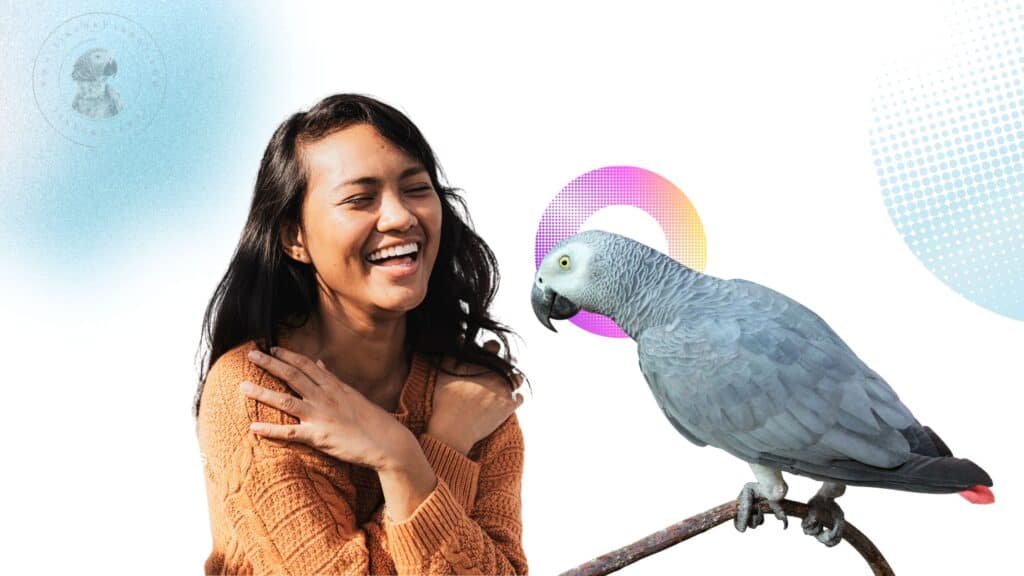
Without question, the owner of the flighted parrot must “step up to the plate” and learn certain training skills that will serve to keep the parrot safe. There is the chance that one day the flighted parrot will go through the doorway after the owner and become lost. Whether or not retrieval is successful may well depend upon whether the parrot has been taught the recall, has become conditioned to respond to a contact call, and knows how to fly downward.
When keeping a flighted parrot, it is necessary for the owner to live differently, to train himself to remain aware of any possible dangers to the flighted bird. This may involve foregoing use of a ceiling fan, installing double doorways to prevent loss, taking shorter vacations, and training oneself to remain mindful of the parrot’s whereabouts when out of the cage.
Finally, handling issues must be given closer attention when the parrot is flighted. Either the parrot must be transported in a carrier, or trained to allow the owner to keep a thumb firmly pressed down on the bird’s foot and a hand on the bird’s back when covering short distances outdoors.
The owner of the flighted parrot will find that this is just one of many “training issues” that will warrant attention. While this training will undoubtedly improve the parrot/human relationship, it still demands time and attention.
Summary
Perhaps, in retrospect, this analysis has not been so unbiased. The astute reader can not help but pick up on my enthusiasm for keeping my own birds flighted. In the beginning of my parrot keeping career, I kept my birds clipped, having been led to believe that this is what the responsible parrot owner does. Once I began breeding, and realized the benefits of fledging to the babies, I had a new awareness of the benefits of flight for all birds.
Gradually, as my own knowledge and skill has grown, each of my parrots has become flighted…and safely so. I would never choose to go backwards in this progression of philosophy and practice. In fact, observation of their delight in flying humbles me. Who am I to remove this most significant and defining of abilities?
If you found this blog helpful, It would be great if you could share it with your family and friends who might find it useful as well.
You might like to read these as well 🙂
Should You Clip Your Bird Wings?
Parrot Care Tips! Easy & Simple To Understand
Decoding Parrot Minds: Bird Behavior, Emotions And Intelligence
Why an African Grey Parrot Bites and What to do
Talk Birdy to Me: Find Your Perfect Parrot Match!
For more useful content about African grey parrots, you can subscribe my site with your email to get notification upon publishing a new blog, the subscribe box you can see on the right side of this page. Also if you get an alert on your web browser while browsing my site, allow it and that will also give you an alert whenever I publish a new blog. 🙂
Stay safe and much love!

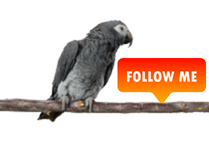
Hey there! 🐾 Looking for top-notch pet supplies or anything on Amazon?
Support our site by shopping on Amazon through our this referral link, it will not cost you extra!
Your purchases on Amazon can help us continue providing valuable content.
Thank you for your support! 🛍️
